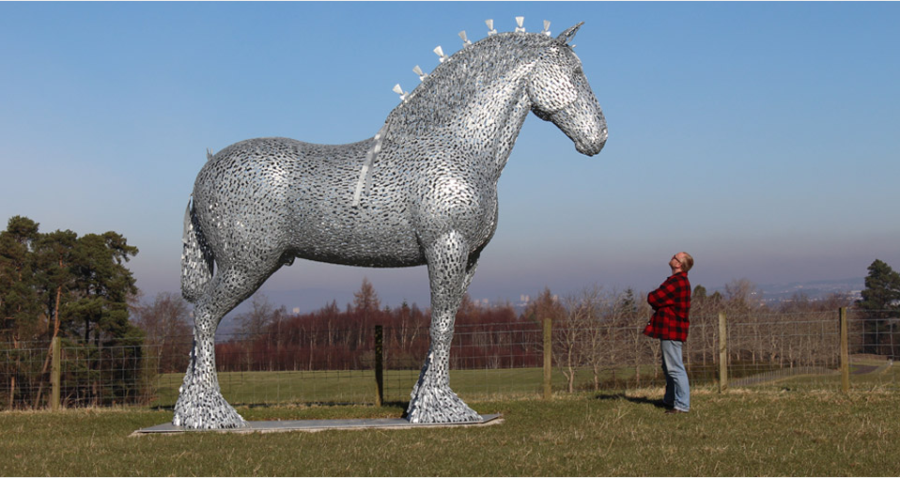Kelpie: The Scottish Folklore Beast
Andy Scott (http://www.andyscottsculptor.com/)
One of Andy Scott’s Kelpie pieces.
What is a Kelpie? Where does it come from? Kelpies are often described as being a black or gray horse that emerges from rivers and streams to drown and devour humans. Kelpies can be interpreted many different ways, in some accounts they have a mane and tail of kelp on a normal horse body and in other descriptions they have feet like a hippo instead of hooves. Kelpies can also be seen as a horse made entirely from seaweed or a hybrid with the front half of a horse and the back half of a fish.
The story of the Kelpie originated in Scotland in about 1759 as the belief that water gods had sent horses to drown people as sacrifices. This later turned into a story mothers would tell their children to keep them away from rivers. The word “Kelpie” comes from the Scottish Gaelic word ‘cailpeach’ or’ colpach’ meaning heifer or colt which refers to the extreme horse-like appearance of the Kelpie.
In Scotland, there are a pair of horse head statues called “The Kelpies” which were designed by Andy Scott and later built in June 2013 looking over the Forth & Clyde Canal. The Kelpies were built to honor the working horses that played a major role in the industries of Scotland. They are made of structural stainless steel cladding and are 30 meters tall. Each Kelpie head weighs 300 tons.
Even though the stories of Kelpies are very old, we still see modern day references of them. For example in the movie and book Fantastic Beasts by JK Rowling, we see a Kelpie made of seaweed living in one of Newt Scamander’s enclosures. Another adaptation of the Kelpie is seen in Frozen 2 when Elsa is trying to cross the ocean and encounters a horse made of water that attempts to drown her. Elsa is able to survive by making a bridle of ice and controlling the Kelpie. This is seen in many of the stories about Kelpies. If someone can bridle the Kelpie, it is forced to do the will of that person. However, if the bridle is to slip, the Kelpie will run to the water where it will drown and devour the rider.
Your donation will support the student journalists of Lindbergh High School. Your contribution will allow us to purchase equipment, cover our annual website hosting costs, send staff to annual trainings during the school year.














